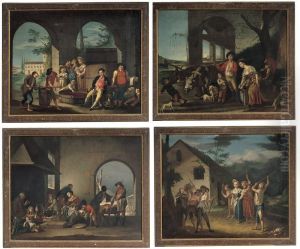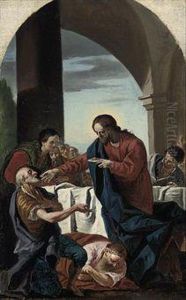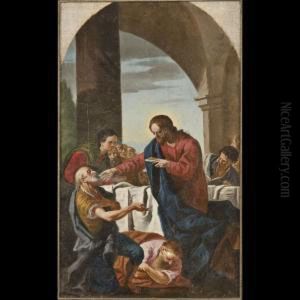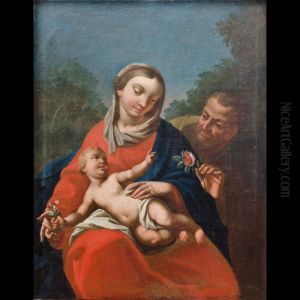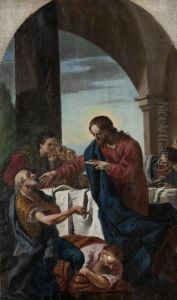Fra Felice Giuseppe Cignaroli Paintings
Fra Felice Giuseppe Cignaroli, also known as Fra Felice da Verona, was an Italian painter of the Baroque period. Born in 1665 in Verona, Italy, he was part of the Cignaroli family, a lineage that included several artists. Although not as widely recognized as his nephew Giambettino Cignaroli, Felice made his own mark in the regional art scene of his time.
Felice Giuseppe Cignaroli took his initial training in art from his family, likely under the guidance of his relatives who were involved in painting. In the Baroque era, it was common for artistic skills and workshops to be passed down through family generations. He later entered religious life, joining the Order of the Minims, which influenced both his lifestyle and the subjects of his artistic works. His monastic life was reflected in the themes of his paintings, which often focused on religious and spiritual content, including depictions of saints and scenes from the Bible.
Cignaroli’s works are characterized by their dynamic compositions and the dramatic use of light and shadow, elements typical of the Baroque style. He was skilled in creating a sense of movement and emotional intensity in his paintings, which were intended to inspire piety and devotion in their viewers. His art was primarily commissioned by religious institutions in Verona and the surrounding areas, and as such, many of his works remain in situ, contributing to the cultural and religious heritage of the region.
Despite the evident skill and the somewhat modest recognition he garnered during his lifetime, Fra Felice Giuseppe Cignaroli's artistic legacy was somewhat overshadowed by the later success of his nephew, Giambettino Cignaroli, who became the more famous painter of the Cignaroli family. Giambettino was known for his more secular and rococo style, which gained considerable popularity in the 18th century.
Fra Felice Giuseppe Cignaroli passed away in 1729. Today, his works are studied as part of the broader context of Italian Baroque art and are appreciated for their devotional qualities and their representation of the religious fervor of the period. While there may not be an extensive catalogue of his works when compared to more prolific artists of the time, those that do survive contribute valuable insight into the religious art and culture of early 18th-century Italy.
